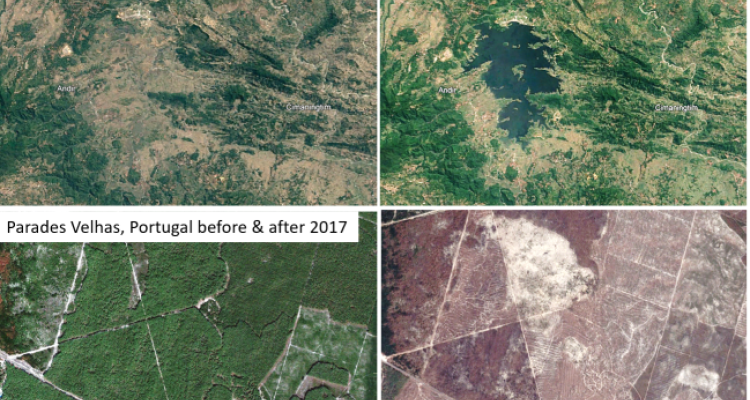
Thesis subject
MSc thesis topic: Quantification and driver attribution of land transitions at high resolution using sample and map-based approaches
With the urgency to act on climate change that is facing the Earth, it has become ever important to monitor changes occurring on the Earth’s surface. Monitoring land changes and transitions such as forest to non-forest or wetlands to non-wetlands (i.e., forest disturbance or wetlands degradation), is a prerequisite to identifying the underlying causes (natural vs human-induced) of land transitions that are needed for decision making and policy implementations for adaptation to climate change.
With the advancements in earth observation technologies, the Earth’s surface can be monitored with unprecedented details both in spatial and temporal aspects. Examples include global-scale mapping of landcover at 10m resolution by ESA’s WorldCover project, ESRI’s land cover time series, and also for specific land cover types such as forest and water (Global Forest Watch and Global Surface Water respectively). These products provide wall-to-wall monitoring of generic or specific land transitions that are undergoing.
However, such automated monitoring of land transitions is subject to different errors related to models and data availability. As an alternative, accurate but sparsely available land transition information can be used to estimate the extent of different transitions. These different sources can also be combined to improve the accuracy of land transition estimations.
The next step for monitoring land transitions is to identify and attribute the underlying causes of land transitions, information that is essential for policymaking and implementation. Often the type of land transition can be directly attributed to drivers e.g., urbanization is caused by human action. However, for some transitions, the underlying cause cannot be directly attributed (e.g., expansion of water bodies) and requires additional investigations.
This research aims to quantify land transitions and identify the underlying drivers of transitions. The study will be conducted using available wall-to-wall products and also in-situ data on land transitions at high resolution (10m resolution). Certain transitions processes such as deforestation, urbanization, cropland expansion, and wetland degradation can be prioritized depending on the region of interest.
Objectives
- Quantify land transitions based on sample and map-based approaches at high spatial details
- Identify underlying drivers of land transitions
Literature
- N. Tsendbazar, M. Herold, L. Li, A. Tarko, S. de Bruin, D. Masiliunas, M. Lesiv, S. Fritz, M. Buchhorn, B. Smets, R. Van De Kerchove, M. Duerauer, Towards operational validation of annual global land cover maps, Remote Sensing of Environment, Volume 266, 2021
- Lili Xu, Martin Herold, Nandin-Erdene Tsendbazar, Dainius Masiliūnas, Linlin Li, Myroslava Lesiv, Steffen Fritz, Jan Verbesselt, Time series analysis for global land cover change monitoring: A comparison across sensors, Remote Sensing of Environment, Volume 271, 2022
- Stehman, S. V., 2013. Estimating area from an accuracy assessment error matrix. Remote Sens. Environ., 132, 202-211.
- Yali Gong, Huan Xie, Xiaohua Tong, Yanmin Jin, Xiong Xv and Qunming Wang, Area Estimation of Multi-Temporal Global Impervious Land Cover Based on Stratified Random Sampling, The International Archives of the Photogrammetry, Remote Sensing and Spatial Information Sciences, Volume XLIII-B4-2020, 2020, XXIV ISPRS Congress.
Requirements
- Statistical skills (e.g. using R) or strong motivation to learn it.
Theme(s): Integrated Land Monitoring